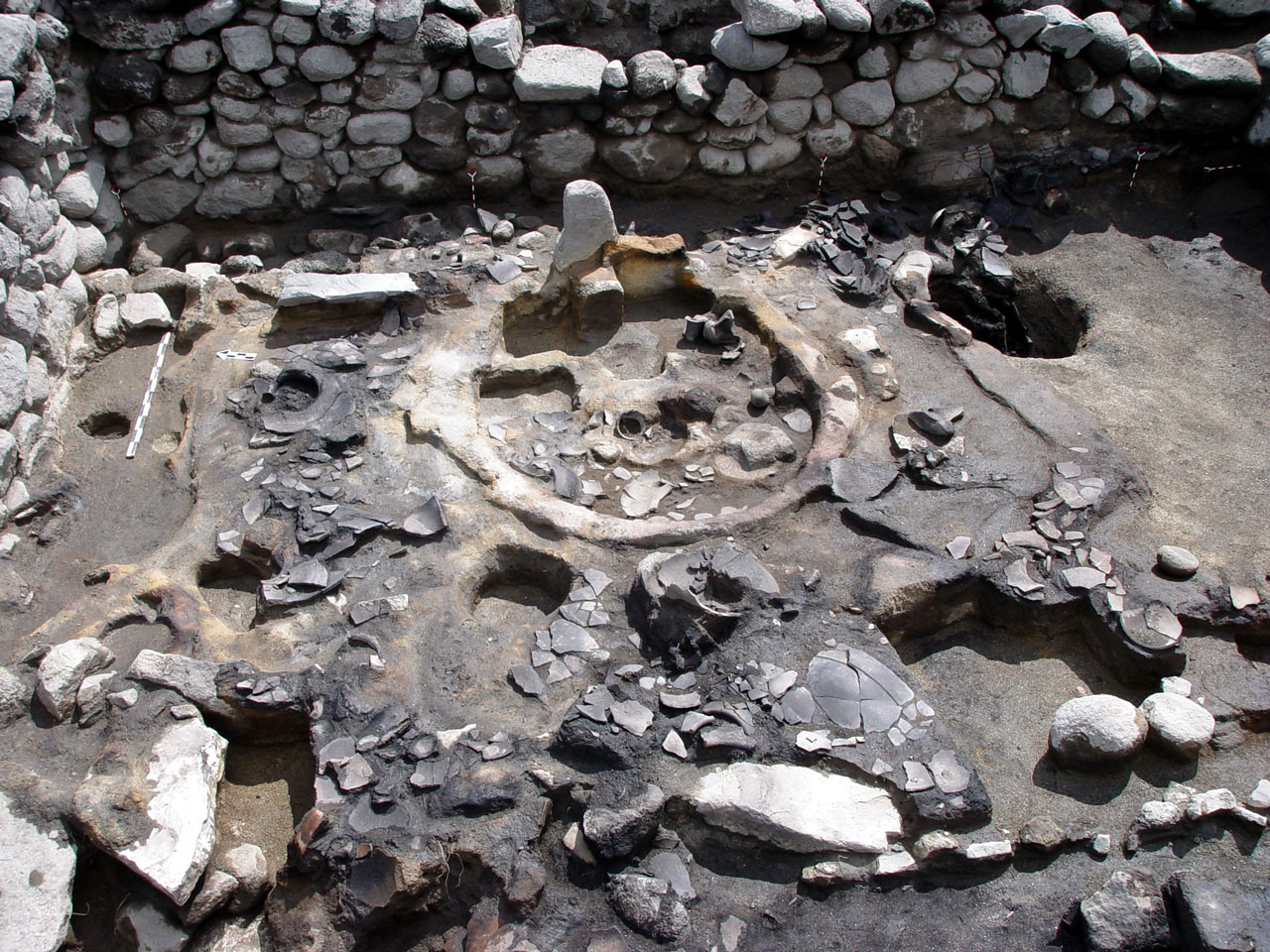

Click here to return to newsletter contents.
This summer the University of Chicago in collaboration with the Armenian Institute of Archaeology and Ethnography continued excavations in the Republic of Armenia. Known as Project ArAGATS (Archaeology and Geography of Ancient Transcaucasian States), this joint venture seeks to explore the rise of complex societies in the south Caucasus during the Late Bronze Age (ca. 1500–1200 BC). The project has been under way for several years. After extensive surveys, Project ArAGATS began excavations in 2002. I was fortunate to join the team in this second season of excavation.
Modern Armenia has experienced a turbulent decade since the collapse of the Soviet Union. The challenge of building a sovereign state has dominated the country’s political landscape, and the successes and failures of this project are manifest to any visitor of the country. For a team of archaeologists researching the state in antiquity, the irony is hard to miss. Resonances between past and present are striking in a part of the world that has recently undergone such drastic changes in social organization and political authority since the end of Soviet communism.
So, too, the Late Bronze Age seems to have ushered a new form of political organization into the south Caucasus. In contrast to the Middle Bronze Age, during which the absence of settlements is thought to indicate a political economy based on pastoral nomadism, the Late Bronze Age was a period of political centralization, evidenced by the presence of fortified citadels. Through survey and test excavations, Project ArAGATS identified such citadels in an area of western Armenia called the Tsakahovit plain. This summer’s work centered on two of these fortified settlement sites, which boast occupation levels from the earliest phases of the Late Bronze Age. These fortresses are called Tsakahovit and Gegharot.
 |
The most notable discovery of the season was found at Gegharot, where the team uncovered a circular altar complex within the citadel area. The floor surrounding the altar was strewn with ceramics, all of which date to the first and second horizons of the Late Bronze Age. Preliminary research suggests that this altar complex is the earliest one of its kind in the region and unique in its association with metallurgy. The area around the altar yielded a crucible, a mold used to make jewelry, and bronze objects, including a pin and bracelet. The significance of this altar is still under analysis; however, the entire complex raises several questions about the relation among industry, cult practice, and the state at the time of its earliest consolidation.
 |
At the Tsakahovit fortress, which faces Gegharot on the opposite side of the Tsakahovit plain, we uncovered the continuation of a robust building wall first discovered in 2002. By the end of this season, more than 25 meters of this wall were exposed. The wall probably dates to the Late Bronze Age, and its extent and quality of masonry are exceptional compared with contemporary sites in the region. The function of the building will not be fully understood until more of the site is exposed. Some portions of the wall were rebuilt in such a way as to suggest that the structure was incorporated into the architectural complexes of later periods. Although the Tsakahovit plain was entirely abandoned at the end of the Late Bronze Age, this summer’s excavations confirmed that the Tsakahovit citadel was reoccupied during the little-understood period of Achaemenid rule and the equally obscure Hellenistic period.
Much more remains to be done at Tsakahovit and Gegharot; however, the importance of these sites is unmistakable. They promise to continue to shed light on the emergence of complex society in the south Caucasus during the mid-second millennium BC. Further investigation into later occupation levels at the sites can also fill a void in our knowledge about the south Caucasus in the periods of foreign rule and dynastic sovereignty that marked the second half of the first millennium BC.
For more information on Project ArAGATS, stay tuned for a report on the 2002 season in a forthcoming issue of the American Journal of Archaeology.
Lori Khatchadourian, IPCAA Ph.D. student
Photographs courtesy of Dr. Adam Smith, University of Chicago.
Copyright © 2003 The Kelsey Museum of Archaeology, University of Michigan. All rights reserved.